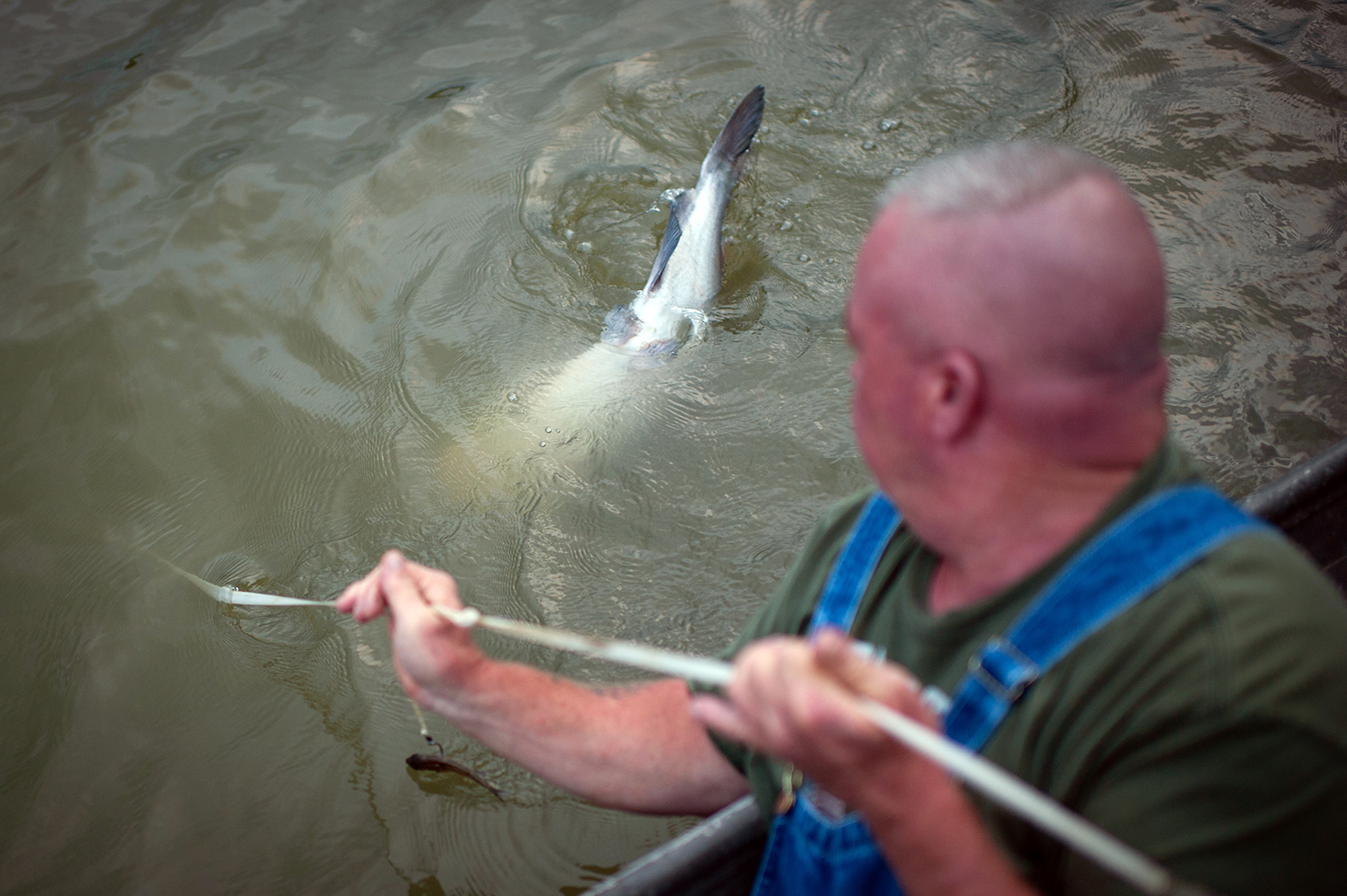GLEN HEAVNER CAN THINK of a dozen ways to describe the Lower White River: the diamond of Arkansas, the land that time forgot, a state of mind, his favorite place on the planet.
“I used to drive 600 miles every day. Now as far as I go is the boat ramp,” says Glen, a retired trucker who lives half a mile from the dock where he and his dad, Larry, keep their twin johnboats. “Life slows down on the White River.”
The White flows fast and clear out of the Ozark Mountains, but by the time it winds into the Mississippi floodplain, past the Heavner home, and through the state’s legendary green timber duck holes, it’s wide and leisurely. If life here is slow, it begins to crawl when nearby WMAs hold back water ahead of duck season. Flagging river levels and oppressive heat make for tough trotlining, which requires a strong current to keep tension on the lines. But if anyone can catch catfish in such conditions, it’s the Heavners.
A trotline consists of one main heavy line or rope, with evenly spaced baited hooks that branch, or drop, from the main line. Like traplines, trotlines catch critters while you’re elsewhere. (In Arkansas, you must check trotlines every 48 hours, though most people don’t wait that long.) They aren’t legal in every state, but in much of the South they’re one of the oldest and most traditional ways to fish.
Just a few other locals still run trotlines for river cats. Glen sees them on the White sometimes, but he’s never had an opportunity to ask if they catch their own bait, as he does, or how they’ve been faring as the river and the times change.
“Trotlining is becoming less common,” Glen says, “but the people who still do it hold onto it dearly.”
Because even on the slowest days, the appeal of trotlining is obvious. As each drop line rises out of the murk to reveal an empty hook, anticipation gives way to disappointment, then returns in an instant as another drop emerges from the depths. It’s addictive. There’s always another hook, or line to run, or another evening to set baits and, maybe, catch a giant catfish. He may have embraced the laid-back river life, but even Glen has little patience for a rod and reel; he can’t stand waiting around for a bite.
The Heavners work hard to set trotlines, but they don’t rush or cut corners. “A high-octane young man,” Glen was forced to slow down after a brain injury in the Army. Determined to secure an honorable discharge rather than a medical discharge, he drove officers across Europe in the waning days of the Soviet Union. When he returned home to Arkansas, he drove 18-wheelers for Walmart. Hunting and fishing magazines kept him sane during 20 solitary years of long-haul trucking.
Glen safely navigated 3 million miles of America’s highways without a single accident, only to step on a patch of ice in 2017 and hit his head, exacerbating his brain injury and ending his career. A few years and heart attacks later (even his wife can’t quite keep track), Glen suffered a stroke while hunting from his climbing stand. He lost the feeling in his left side, his former strength, and much of his energy.
But Glen sees these challenges for their opportunities: early retirement has given him time for friends, family, and fishing. If he wakes up in the morning, it’s going to be a good day. If he gets to run trotlines with his dad, it’ll be even better.
“We catch ’em all the time,” says Glen, untying Larry’s boat as they prepare to run half a dozen trotlines in the August heat. “Why not today?”
This story first appeared in the No. 3 2022 issue of Outdoor Life as the “Master Trotliners of the White River.”
Read the full article here





